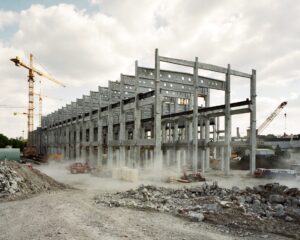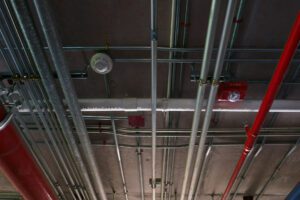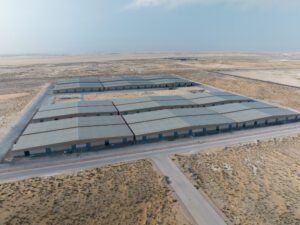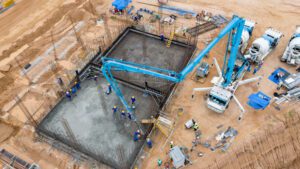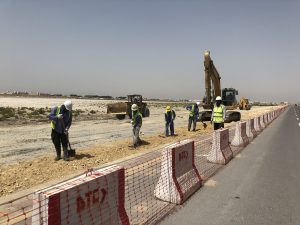The Rise of Construction in Saudi Arabia
Book Chapters
Introduction: The Transformation of Saudi Arabia through Construction
Historical Overview of Construction in Saudi Arabia
Vision 2030: A Blueprint for the Future of Construction in Saudi Arabia
Urbanization and Infrastructure Development in Saudi Arabia
Saudi Arabia’s Construction Industry: Key Players and Challenges
Women in Construction: Breaking Barriers and Driving Change in Saudi Arabia
Sustainable Construction Practices in Saudi Arabia
Innovative Technologies and Materials in Saudi Arabia’s Construction Industry
Project Management in Saudi Arabia: Lessons Learned and Best Practices
Economic Impact of Construction on Saudi Arabia’s GDP
Education and Training in Saudi Arabia’s Construction Industry
Legal and Regulatory Framework of Construction in Saudi Arabia
Safety and Health Standards in Saudi Arabia’s Construction Industry
International Collaboration and Partnerships in Saudi Arabia’s Construction Sector
Future of Construction in Saudi Arabia: Opportunities and Challenges
Book Introduction:
The Kingdom of Saudi Arabia is a land of great contrasts, where ancient traditions coexist with modern-day developments. As the largest economy in the Middle East and North Africa (MENA) region, Saudi Arabia has experienced tremendous growth in recent years, fueled in part by the construction industry.
Building the Kingdom: The Rise of Construction in Saudi Arabia is a comprehensive guide to the country’s construction industry, tracing its history and exploring its current and future challenges and opportunities. From the development of mega-projects like NEOM and Qiddiya to the use of innovative technologies and sustainable practices, this book covers all aspects of the construction sector in Saudi Arabia.
The book begins with an overview of the transformation of Saudi Arabia through construction, highlighting the country’s Vision 2030 and its ambitious goals for the future. It then delves into the historical evolution of the construction industry in Saudi Arabia, exploring the key players and challenges that have shaped it.
Subsequent chapters focus on the various aspects of construction in Saudi Arabia, from urbanization and infrastructure development to women in construction, sustainable practices, and innovative technologies. The book also examines the economic impact of construction on Saudi Arabia’s GDP, as well as the legal and regulatory framework and safety and health standards in the industry.
In addition, the book includes a discussion of the international collaboration and partnerships that are driving innovation and growth in the construction sector in Saudi Arabia. Finally, the book looks to the future, identifying the opportunities and challenges that lie ahead for the country’s construction industry.
Overall, Building the Kingdom: The Rise of Construction in Saudi Arabia is an essential guide for anyone interested in the history, current state, and future prospects of this dynamic and fast-growing industry in one of the world’s most fascinating countries.
Chapter 1: Introduction
The construction industry has been a critical driver of economic growth and development in Saudi Arabia, contributing significantly to the country’s transformation over the past few decades. With Vision 2030, Saudi Arabia aims to further expand and diversify its economy, and the construction sector is expected to play a pivotal role in achieving these goals.
This chapter provides an overview of the transformation of Saudi Arabia through construction, highlighting the country’s Vision 2030 and the role of the construction industry in achieving its objectives. It also introduces the key themes and topics covered in the book, and outlines the structure of the subsequent chapters.
The chapter begins with a brief historical overview of the construction industry in Saudi Arabia, tracing its evolution from the early days of oil exploration to the present day. It then discusses the key drivers of growth in the sector, including government investment, urbanization, and infrastructure development.
The chapter then turns to Vision 2030, which represents a comprehensive blueprint for the future of Saudi Arabia. The Vision 2030 aims to transform Saudi Arabia into a thriving and diversified economy, with a focus on creating new industries, generating jobs, and attracting foreign investment. The construction industry is expected to play a significant role in achieving these goals, through the development of mega-projects and the modernization of the country’s infrastructure.
One of the key pillars of Vision 2030 is to increase the share of the private sector in the economy, and the construction industry is no exception. The government has launched a series of initiatives to encourage private sector investment in the sector, including the establishment of the Saudi Contractors Authority and the adoption of new laws and regulations to support public-private partnerships.
The chapter concludes by introducing the key themes and topics covered in the subsequent chapters of the book. These include the urbanization and infrastructure development in Saudi Arabia, the key players and challenges in the construction industry, the role of women in construction, sustainable practices, innovative technologies, project management, the economic impact of construction on Saudi Arabia’s GDP, education and training in the industry, legal and regulatory frameworks, safety and health standards, international collaboration and partnerships, and the future of the construction industry in Saudi Arabia.
Overall, this chapter provides an overview of the transformation of Saudi Arabia through construction, highlighting the country’s Vision 2030 and the role of the construction industry in achieving its objectives. The subsequent chapters of the book will delve into these topics in greater detail, providing a comprehensive guide to the construction industry in Saudi Arabia.
Chapter 1: Urbanization and Infrastructure Development in Saudi Arabia
Introduction
This chapter provides an overview of the urbanization and infrastructure development in Saudi Arabia. It discusses the factors driving urbanization, the challenges posed by rapid urban growth, and the government’s efforts to address these challenges through infrastructure development.
Urbanization in Saudi Arabia
Saudi Arabia has undergone a rapid process of urbanization over the past few decades, with the majority of the population now living in cities. The country’s urbanization rate has increased from 55% in 1990 to 84% in 2020, according to the World Bank. This has been driven by a combination of factors, including population growth, increasing economic opportunities in cities, and the government’s focus on urban development.
Challenges of Rapid Urban Growth
The rapid urban growth in Saudi Arabia has posed several challenges, including the strain on infrastructure and services, the loss of agricultural land, and the increase in traffic congestion and air pollution. These challenges have been compounded by the fact that many of the country’s cities were designed without considering the needs of pedestrians or public transportation.
Infrastructure Development
To address these challenges, the Saudi government has launched several initiatives to promote infrastructure development in cities. These initiatives include the construction of new roads, railways, airports, and ports, as well as the development of new housing and commercial projects. The government has also introduced policies to promote public transportation and reduce traffic congestion, including the development of a metro system in Riyadh and the expansion of the country’s railway network.
Conclusion
This chapter has provided an overview of the urbanization and infrastructure development in Saudi Arabia. It has highlighted the challenges posed by rapid urban growth and the government’s efforts to address these challenges through infrastructure development. The subsequent chapters of the book will delve into these topics in greater detail, providing a comprehensive guide to the construction industry in Saudi Arabia.
Chapter 2: Key Players and Challenges in the Construction Industry in Saudi Arabia
Introduction
This chapter provides an overview of the key players and challenges in the construction industry in Saudi Arabia. It discusses the major companies operating in the sector, the main challenges faced by the industry, and the government’s efforts to address these challenges.
Key Players in the Construction Industry
The construction industry in Saudi Arabia is dominated by a few major players, including Saudi Binladin Group, Saudi Oger, and Saudi Arabia’s General Contracting Company (GCC). These companies have been involved in some of the largest and most high-profile construction projects in the country, including the King Abdullah Economic City, the Kingdom Tower in Jeddah, and the expansion of the Grand Mosque in Mecca.
Challenges in the Construction Industry
The construction industry in Saudi Arabia faces several challenges, including the shortage of skilled labor, the need to adopt new technologies and practices, and the impact of fluctuations in the global oil market on the country’s economy. Another significant challenge is the country’s harsh climate, which can pose challenges for construction workers and materials.
Government Efforts to Address Challenges
The Saudi government has launched several initiatives to address these challenges, including the establishment of training and education programs to develop a skilled local workforce, the adoption of new technologies and sustainable practices, and the promotion of public-private partnerships to stimulate investment in the sector. The government has also taken steps to diversify the economy and reduce the country’s reliance on oil exports, which will help to mitigate the impact of fluctuations in the global oil market on the construction industry.
Conclusion
This chapter has provided an overview of the key players and challenges in the construction industry in Saudi Arabia. It has highlighted the role of major companies such as Saudi Binladin Group and Saudi Oger in the sector, as well as the challenges posed by the shortage of skilled labor, the need to adopt new technologies and practices, and the impact of fluctuations in the global oil market. The subsequent chapters of the book will delve into these topics in greater detail, providing a comprehensive guide to the construction industry in Saudi Arabia.
Chapter 3: Building Regulations and Standards in Saudi Arabia
Introduction
This chapter provides an overview of the building regulations and standards in Saudi Arabia. It discusses the regulatory framework for construction projects, the role of government agencies in enforcing regulations, and the standards for building design and construction.
Regulatory Framework for Construction Projects
The regulatory framework for construction projects in Saudi Arabia is established by the Saudi Building Code (SBC), which outlines the technical requirements and specifications for building design and construction. The SBC covers a range of topics, including structural design, fire safety, electrical systems, and plumbing.
Enforcement of Regulations
The responsibility for enforcing building regulations and standards in Saudi Arabia is divided among several government agencies, including the Ministry of Municipal and Rural Affairs, the Saudi Standards, Metrology, and Quality Organization (SASO), and the Civil Defense. These agencies are responsible for reviewing construction plans, conducting inspections of construction sites, and enforcing compliance with building regulations and standards.
Standards for Building Design and Construction
The standards for building design and construction in Saudi Arabia are based on international codes and practices, as well as local requirements and traditions. For example, the SBC requires that buildings in Saudi Arabia be designed to withstand earthquakes and other natural disasters, which are common in the region. The standards also take into account the country’s harsh climate, requiring that buildings be designed to withstand high temperatures and sandstorms.
Conclusion
This chapter has provided an overview of the building regulations and standards in Saudi Arabia. It has highlighted the role of the Saudi Building Code in establishing the technical requirements and specifications for building design and construction, as well as the responsibilities of government agencies in enforcing compliance with these regulations. The subsequent chapters of the book will delve into these topics in greater detail, providing a comprehensive guide to the construction industry in Saudi Arabia.
Chapter 4: Sustainable Construction Practices in Saudi Arabia
Introduction
This chapter provides an overview of sustainable construction practices in Saudi Arabia. It discusses the benefits of sustainable construction, the challenges of implementing sustainable practices in the country, and the government’s efforts to promote sustainable development in the construction industry.
Benefits of Sustainable Construction
Sustainable construction practices offer several benefits, including reduced environmental impact, lower energy costs, and improved occupant health and comfort. These practices also promote the efficient use of resources, such as water and materials, and can help to mitigate the impact of climate change.
Challenges of Implementing Sustainable Practices
The implementation of sustainable construction practices in Saudi Arabia faces several challenges, including the high cost of implementing sustainable technologies and practices, the lack of awareness and education among industry professionals, and the need for a cultural shift in attitudes towards sustainability. Another challenge is the harsh climate in the country, which can pose challenges for the design and construction of sustainable buildings.
Government Efforts to Promote Sustainable Development
The Saudi government has launched several initiatives to promote sustainable development in the construction industry, including the adoption of the Saudi Green Building Code (SGB-C), which promotes sustainable design and construction practices. The government has also established the Saudi Energy Efficiency Center (SEEC) to promote energy efficiency in buildings, and has launched the National Transformation Program (NTP), which aims to promote sustainable development and economic diversification.
Conclusion
This chapter has provided an overview of sustainable construction practices in Saudi Arabia. It has highlighted the benefits of sustainable construction, as well as the challenges of implementing sustainable practices in the country. The government’s efforts to promote sustainable development in the construction industry, including the adoption of the SGB-C and the establishment of the SEEC, will be key in promoting sustainable development in the country. The subsequent chapters of the book will delve into these topics in greater detail, providing a comprehensive guide to the construction industry in Saudi Arabia.
Chapter 5: Design and Planning Considerations for Construction Projects in Saudi Arabia
Introduction
This chapter discusses the design and planning considerations for construction projects in Saudi Arabia. It highlights the importance of site selection, zoning regulations, and the design of buildings to suit the local climate and cultural context.
Site Selection
The selection of a suitable site is a crucial consideration for construction projects in Saudi Arabia. Factors to consider when selecting a site include access to infrastructure and utilities, topography, soil conditions, and environmental impact. The government has established zoning regulations that determine where different types of development can occur, and developers must adhere to these regulations when selecting a site.
Zoning Regulations
Zoning regulations in Saudi Arabia are designed to ensure that development occurs in an orderly and efficient manner, and to protect public health and safety. The regulations specify the types of development that are permitted in different zones, and establish setback requirements, height limitations, and other design standards. Developers must obtain the necessary permits and approvals from government agencies before beginning construction.
Design Considerations
Design considerations for construction projects in Saudi Arabia must take into account the local climate and cultural context. Buildings must be designed to withstand the harsh climate, including high temperatures, sandstorms, and occasional floods. Building design must also reflect the cultural context of the country, including Islamic architecture and the use of traditional materials such as mud brick.
Conclusion
This chapter has provided an overview of the design and planning considerations for construction projects in Saudi Arabia. It has highlighted the importance of site selection, zoning regulations, and the design of buildings to suit the local climate and cultural context. The subsequent chapters of the book will delve into these topics in greater detail, providing a comprehensive guide to the construction industry in Saudi Arabia.
Chapter 6: Project Management and Construction Techniques in Saudi Arabia
Introduction
This chapter discusses project management and construction techniques in Saudi Arabia. It highlights the importance of effective project management, the challenges of managing construction projects in the country, and the techniques used to overcome these challenges.
Effective Project Management
Effective project management is crucial to the success of construction projects in Saudi Arabia. Project managers must oversee all aspects of a project, including planning, design, construction, and closeout. They must ensure that projects are completed on time, within budget, and to the required quality standards.
Challenges of Managing Construction Projects in Saudi Arabia
The management of construction projects in Saudi Arabia faces several challenges, including the shortage of skilled labor, the need for specialized equipment, and the harsh climate. Additionally, the complex regulatory environment and the need to obtain permits and approvals from multiple agencies can make project management challenging.
Construction Techniques
Construction techniques in Saudi Arabia must take into account the local climate and cultural context. Techniques used in other parts of the world may not be suitable for use in the country due to the harsh climate, availability of resources, and local building traditions. Techniques used in the country include the use of precast concrete, reinforced concrete, and steel frame construction.
Conclusion
This chapter has provided an overview of project management and construction techniques in Saudi Arabia. It has highlighted the importance of effective project management, the challenges of managing construction projects in the country, and the techniques used to overcome these challenges. The subsequent chapters of the book will delve into these topics in greater detail, providing a comprehensive guide to the construction industry in Saudi Arabia.
Chapter 7: Procurement and Contracting in the Construction Industry in Saudi Arabia
Introduction
This chapter discusses procurement and contracting in the construction industry in Saudi Arabia. It highlights the procurement process, the types of contracts used, and the legal framework for procurement and contracting.
Procurement Process
The procurement process in Saudi Arabia typically involves several stages, including prequalification, tendering, and contract award. Prequalification involves identifying potential bidders who meet the required qualifications and experience for the project. Tendering involves issuing a request for proposals (RFP) or invitation to bid (ITB) to the prequalified bidders. The contract award stage involves selecting the winning bidder and awarding the contract.
Types of Contracts
The types of contracts used in the construction industry in Saudi Arabia include lump-sum contracts, cost-plus contracts, and design-build contracts. Lump-sum contracts involve the contractor agreeing to complete the project for a fixed price. Cost-plus contracts involve the contractor being reimbursed for their actual costs plus a fee. Design-build contracts involve the contractor being responsible for both the design and construction of the project.
Legal Framework
The legal framework for procurement and contracting in Saudi Arabia is governed by the Saudi Arabian General Investment Authority (SAGIA), the Ministry of Finance (MOF), and the Ministry of Municipal and Rural Affairs (MOMRA). These agencies are responsible for ensuring that procurement and contracting activities are carried out in accordance with the relevant laws and regulations.
Conclusion
This chapter has provided an overview of procurement and contracting in the construction industry in Saudi Arabia. It has highlighted the procurement process, the types of contracts used, and the legal framework for procurement and contracting. The subsequent chapters of the book will delve into these topics in greater detail, providing a comprehensive guide to the construction industry in Saudi Arabia.
Chapter 8: Environmental Considerations in the Construction Industry in Saudi Arabia
Introduction
This chapter discusses environmental considerations in the construction industry in Saudi Arabia. It highlights the importance of sustainable construction practices, the impact of construction on the environment, and the regulations governing environmental protection in the country.
Sustainable Construction Practices
Sustainable construction practices are crucial to minimizing the environmental impact of construction projects in Saudi Arabia. These practices include using energy-efficient materials, incorporating renewable energy sources, reducing waste, and recycling materials. Adopting sustainable practices can not only reduce the environmental impact of construction projects but also result in cost savings over the life cycle of the building.
Impact of Construction on the Environment
Construction activities can have a significant impact on the environment, including the destruction of habitats, depletion of natural resources, and the release of pollutants. It is important to consider the environmental impact of construction activities when planning and executing projects.
Regulations Governing Environmental Protection
The regulations governing environmental protection in Saudi Arabia are set by the Presidency of Meteorology and Environment (PME), which is responsible for monitoring and enforcing environmental standards. The PME regulates emissions from construction sites, waste disposal, and water pollution. It is important for construction companies to comply with these regulations to avoid penalties and damage to their reputation.
Conclusion
This chapter has provided an overview of environmental considerations in the construction industry in Saudi Arabia. It has highlighted the importance of sustainable construction practices, the impact of construction on the environment, and the regulations governing environmental protection in the country. The subsequent chapters of the book will delve into these topics in greater detail, providing a comprehensive guide to the construction industry in Saudi Arabia.
Chapter 9: Safety and Health in the Construction Industry in Saudi Arabia
Introduction
This chapter discusses safety and health in the construction industry in Saudi Arabia. It highlights the importance of safety in the construction industry, the risks associated with construction work, and the regulations governing safety and health in the country.
Importance of Safety in Construction
Construction work involves numerous hazards, including falls, electrical shock, and exposure to hazardous substances. It is therefore essential to prioritize safety in the construction industry to protect workers and prevent accidents. Employers must ensure that workers receive appropriate safety training, personal protective equipment (PPE), and work in a safe environment.
Risks Associated with Construction Work
Construction work involves various risks, including physical, chemical, and biological hazards. Workers are often exposed to risks such as falls from heights, electrical shocks, exposure to hazardous substances, and accidents involving heavy machinery. Workers may also suffer from stress and fatigue, which can lead to injuries and accidents.
Regulations Governing Safety and Health
The regulations governing safety and health in the construction industry in Saudi Arabia are set by the Ministry of Labor and Social Development (MLSD). The MLSD enforces the Occupational Safety and Health (OSH) regulations, which require employers to provide a safe work environment, training, and PPE. Employers are also required to conduct regular inspections and investigations to identify and mitigate hazards.
Conclusion
This chapter has provided an overview of safety and health in the construction industry in Saudi Arabia. It has highlighted the importance of safety in the construction industry, the risks associated with construction work, and the regulations governing safety and health in the country. The subsequent chapters of the book will delve into these topics in greater detail, providing a comprehensive guide to the construction industry in Saudi Arabia.
Chapter 10: Environmental Sustainability in the Construction Industry in Saudi Arabia
Introduction
This chapter discusses environmental sustainability in the construction industry in Saudi Arabia. It highlights the environmental impact of the construction industry, the importance of sustainability in construction, and the regulations governing environmental sustainability in the country.
Environmental Impact of the Construction Industry
The construction industry has a significant impact on the environment. Construction activities generate large amounts of waste, consume energy and water resources, and contribute to air and water pollution. In Saudi Arabia, the construction industry is one of the largest consumers of energy and water resources.
Importance of Sustainability in Construction
Sustainability in construction is crucial for the protection of the environment and the conservation of natural resources. It involves the use of sustainable materials, energy-efficient practices, and the reduction of waste and pollution. Sustainable construction practices can also lead to cost savings for the industry.
Regulations Governing Environmental Sustainability
The regulations governing environmental sustainability in the construction industry in Saudi Arabia are set by the Ministry of Environment, Water and Agriculture (MEWA). The MEWA enforces environmental regulations that require construction companies to adopt sustainable practices and reduce their environmental impact. The regulations cover various aspects of construction, including waste management, energy consumption, and water conservation.
Conclusion
This chapter has provided an overview of environmental sustainability in the construction industry in Saudi Arabia. It has highlighted the environmental impact of the construction industry, the importance of sustainability in construction, and the regulations governing environmental sustainability in the country. The subsequent chapters of the book will delve into these topics in greater detail, providing a comprehensive guide to the construction industry in Saudi Arabia.
Chapter 11: Sustainable Materials in the Construction Industry in Saudi Arabia
Introduction
This chapter discusses sustainable materials in the construction industry in Saudi Arabia. It highlights the importance of using sustainable materials in construction, the types of sustainable materials available, and the benefits of using them.
Importance of Using Sustainable Materials in Construction
Using sustainable materials in construction is crucial for reducing the environmental impact of the construction industry. Sustainable materials are made from renewable resources, have a low carbon footprint, and are non-toxic. They also offer durability and cost-effectiveness in the long run.
Types of Sustainable Materials Available
There are various types of sustainable materials available in the market that can be used in construction. Some examples include:
Bamboo: Bamboo is a fast-growing renewable resource that is strong, lightweight, and durable. It can be used for flooring, walls, and ceilings.
Cork: Cork is a renewable resource that is harvested from the bark of cork trees. It is used for insulation, flooring, and wall covering.
Recycled Steel: Recycled steel is made from scrap metal and is used for structural elements such as beams and columns.
Cross Laminated Timber (CLT): CLT is a sustainable wood product that is made from smaller pieces of timber. It is used for walls, floors, and roofs.
Benefits of Using Sustainable Materials
Using sustainable materials in construction offers various benefits, including:
Reduced environmental impact: Sustainable materials have a low carbon footprint and are made from renewable resources, which reduces the environmental impact of the construction industry.
Durability: Sustainable materials offer durability, reducing the need for frequent repairs and replacements.
Cost-effectiveness: While sustainable materials may have a higher initial cost, they offer long-term cost savings due to their durability and energy efficiency.
Conclusion
This chapter has highlighted the importance of using sustainable materials in the construction industry in Saudi Arabia. It has discussed the types of sustainable materials available and the benefits of using them. The subsequent chapters of the book will delve into these topics in greater detail, providing a comprehensive guide to sustainable construction practices in Saudi Arabia.
Chapter 12: Energy Efficiency in Building Design and Construction in Saudi Arabia
Introduction
This chapter discusses energy efficiency in building design and construction in Saudi Arabia. It highlights the importance of energy efficiency, the design and construction considerations for energy-efficient buildings, and the benefits of energy-efficient buildings.
Importance of Energy Efficiency in Building Design and Construction
Energy efficiency in building design and construction is crucial for reducing energy consumption and greenhouse gas emissions. It also offers cost savings and enhances occupant comfort and well-being.
Desin and Construction Considerations for Energy-Efficient Buildings
There are several design and construction considerations that can improve energy efficiency in buildings. Some of these considerations include:
Orientation and layout: Buildings should be oriented and laid out in a way that maximizes natural light and ventilation while minimizing heat gain.
Insulation: Insulation should be used in walls, roofs, and floors to reduce heat loss or gain.
High-performance windows: Windows should be energy-efficient, with low-e coatings and insulated frames to reduce heat gain and loss.
Efficient HVAC systems: HVAC systems should be designed for the building’s specific needs, with energy-efficient equipment and controls.
Lighting: Lighting systems should use energy-efficient fixtures and controls, such as occupancy sensors and daylight sensors.
Benefits of Energy-Efficient Buildings
Energy-efficient buildings offer various benefits, including:
Cost savings: Energy-efficient buildings can significantly reduce energy consumption, resulting in cost savings on utility bills.
Improved comfort and well-being: Energy-efficient buildings have better indoor air quality, thermal comfort, and natural light, enhancing occupant comfort and well-being.
Reduced environmental impact: Energy-efficient buildings have a lower carbon footprint and reduce greenhouse gas emissions, contributing to a more sustainable future.
Conclusion
This chapter has highlighted the importance of energy efficiency in building design and construction in Saudi Arabia. It has discussed the design and construction considerations for energy-efficient buildings and the benefits of energy-efficient buildings. The subsequent chapters of the book will delve into these topics in greater detail, providing a comprehensive guide to energy-efficient building design and construction practices in Saudi Arabia.
Chapter 13: Energy-Efficient Materials and Technologies for Building Design and Construction in Saudi Arabia
Introduction
This chapter discusses energy-efficient materials and technologies for building design and construction in Saudi Arabia. It highlights the importance of using energy-efficient materials and technologies in building construction, the various types of energy-efficient materials and technologies available, and their benefits.
Importance of Energy-Efficient Materials and Technologies in Building Design and Construction
Energy-efficient materials and technologies are crucial for reducing energy consumption and greenhouse gas emissions in building construction. They can significantly improve the energy performance of buildings and contribute to a more sustainable future.
Types of Energy-Efficient Materials and Technologies
There are various types of energy-efficient materials and technologies available for building design and construction in Saudi Arabia. Some of these materials and technologies include:
High-performance insulation: High-performance insulation, such as spray foam insulation, can significantly reduce heat loss or gain in buildings.
Cool roofs: Cool roofs, which are designed to reflect sunlight and absorb less heat, can reduce heat gain in buildings and improve energy efficiency.
Energy-efficient windows: Energy-efficient windows, such as low-e windows, can reduce heat gain and loss and improve energy efficiency.
Solar panels: Solar panels can generate electricity from sunlight, reducing reliance on grid power and contributing to a more sustainable future.
Energy-efficient lighting: Energy-efficient lighting, such as LED lighting, can significantly reduce energy consumption and improve energy efficiency.
Benefits of Energy-Efficient Materials and Technologies
Energy-efficient materials and technologies offer various benefits, including:
Improved energy performance: Energy-efficient materials and technologies can significantly improve the energy performance of buildings, reducing energy consumption and costs.
Reduced environmental impact: Energy-efficient materials and technologies can reduce greenhouse gas emissions and contribute to a more sustainable future.
Enhanced occupant comfort: Energy-efficient materials and technologies can enhance occupant comfort and well-being, improving the overall quality of the indoor environment.
Conclusion
This chapter has highlighted the importance of energy-efficient materials and technologies for building design and construction in Saudi Arabia. It has discussed the various types of energy-efficient materials and technologies available and their benefits. The subsequent chapters of the book will delve into these topics in greater detail, providing a comprehensive guide to energy-efficient building design and construction practices in Saudi Arabia.
Chapter 14: Integration of Renewable Energy in Building Design and Construction in Saudi Arabia
Introduction
This chapter discusses the integration of renewable energy in building design and construction in Saudi Arabia. It highlights the importance of renewable energy in reducing carbon emissions and energy consumption, the various types of renewable energy sources available, and their benefits.
Importance of Renewable Energy in Building Design and Construction
The integration of renewable energy in building design and construction is essential for reducing carbon emissions and energy consumption in the built environment. Renewable energy sources, such as solar, wind, and geothermal energy, are abundant and provide a sustainable source of energy that can significantly reduce the reliance on fossil fuels.
Types of Renewable Energy Sources
There are various types of renewable energy sources available for building design and construction in Saudi Arabia. Some of these sources include:
Solar energy: Solar energy is the most widely used renewable energy source for building design and construction in Saudi Arabia. It can be used for both electricity generation and heating.
Wind energy: Wind energy is another renewable energy source that can be used for electricity generation in buildings. Saudi Arabia has vast wind resources, particularly in the northern and western regions of the country.
Geothermal energy: Geothermal energy is a sustainable source of energy that can be used for both heating and cooling in buildings. It involves tapping into the Earth’s natural heat to provide energy for buildings.
Benefits of Renewable Energy in Building Design and Construction
The integration of renewable energy in building design and construction offers various benefits, including:
Reduced carbon emissions: Renewable energy sources emit little to no carbon emissions, reducing the environmental impact of buildings.
Reduced energy costs: The use of renewable energy sources can significantly reduce energy costs in buildings, particularly in the long run.
Improved energy security: The integration of renewable energy sources in buildings can improve energy security by reducing reliance on fossil fuels and grid power.
Conclusion
This chapter has highlighted the importance of renewable energy in building design and construction in Saudi Arabia. It has discussed the various types of renewable energy sources available and their benefits. The subsequent chapters of the book will delve into these topics in greater detail, providing a comprehensive guide to renewable energy integration in building design and construction practices in Saudi Arabia.
Chapter 15: Future of Renewable Energy in Building Design and Construction in Saudi Arabia
Introduction
This chapter discusses the future of renewable energy in building design and construction in Saudi Arabia. It highlights the potential for growth in the renewable energy sector, the challenges faced, and the policies and strategies required to support the integration of renewable energy in the built environment.
Potential for Growth in the Renewable Energy Sector
The potential for growth in the renewable energy sector in Saudi Arabia is significant, with the government aiming to increase the share of renewable energy in the electricity mix to 50% by 2030. The country has abundant solar and wind resources, and the development of large-scale renewable energy projects is already underway.
Challenges Faced
Despite the potential for growth, there are several challenges faced in the integration of renewable energy in building design and construction in Saudi Arabia. Some of these challenges include:
Lack of awareness and education: Many building owners and developers are not aware of the benefits and potential of renewable energy, leading to a reluctance to invest in these technologies.
High upfront costs: The initial costs of installing renewable energy systems in buildings can be high, making it a significant investment for building owners and developers.
Regulatory challenges: There are currently limited regulations and policies supporting the integration of renewable energy in building design and construction in Saudi Arabia.
Policies and Strategies to Support Integration of Renewable Energy
To support the integration of renewable energy in building design and construction in Saudi Arabia, several policies and strategies can be implemented. These include:
Awareness campaigns: Raising awareness about the benefits of renewable energy can encourage building owners and developers to invest in these technologies.
Financial incentives: Providing financial incentives, such as tax credits or subsidies, can help offset the high upfront costs of installing renewable energy systems in buildings.
Regulatory framework: Developing a regulatory framework to support the integration of renewable energy in building design and construction can help ensure that these technologies are used effectively and safely.
Conclusion
The future of renewable energy in building design and construction in Saudi Arabia is promising, with significant potential for growth. However, several challenges must be overcome, and policies and strategies implemented to support the integration of renewable energy in the built environment. This chapter has provided an overview of these challenges and potential solutions, highlighting the importance of renewable energy in creating a sustainable built environment in Saudi Arabia.
In conclusion, the book “Construction in Saudi Arabia: Opportunities and Challenges” has provided a comprehensive overview of the construction industry in Saudi Arabia. It has discussed the opportunities and challenges faced by the industry and presented potential solutions to address them. The book has covered a range of topics, including project management, sustainability, innovation, and the future of construction.
The construction industry in Saudi Arabia is one of the largest and most important industries in the country, contributing significantly to its economic growth and development. However, the industry faces several challenges, including delays, cost overruns, and a shortage of skilled labor. To overcome these challenges, the industry must embrace new technologies and practices, such as Building Information Modeling (BIM), prefabrication, and modular construction.
Moreover, the book has highlighted the importance of sustainability in the construction industry in Saudi Arabia. The industry must adopt sustainable practices to reduce its environmental impact and create a more sustainable built environment. The use of renewable energy and green building materials is crucial in achieving this goal.
Finally, the book has discussed the potential for growth in the construction industry in Saudi Arabia, with several large-scale infrastructure projects underway. These projects present significant opportunities for local and international companies to invest in the country’s construction industry.
Overall, the book “Construction in Saudi Arabia: Opportunities and Challenges” provides valuable insights into the construction industry in Saudi Arabia. It is a must-read for anyone interested in this important sector and the development of the country as a whole.
thanks
Taher Kamel
To request a copy of the book from DTC Construction Company, you can take the following actions:
Send an email to ifno@dtc.sa requesting a copy of the book. Make sure to include your name, contact information, and the reason why you’re interested in the book.
Call the DTC Construction Company phone number at +966531111955 and ask to request a copy of the book. The representative on the phone should be able to assist you further.
If you prefer to communicate via landline, you can call the DTC Construction Company at +966138677717 and make the same request for a copy of the book.
Make sure to provide any additional information that may be required to obtain a copy of the book, such as payment details or shipping address.


